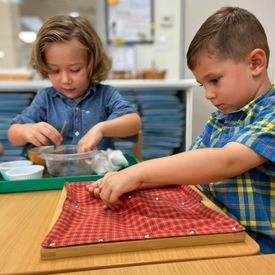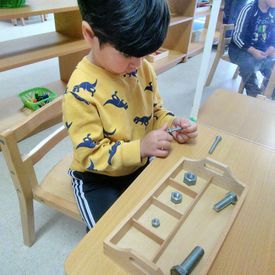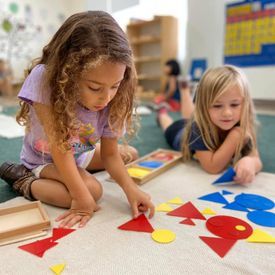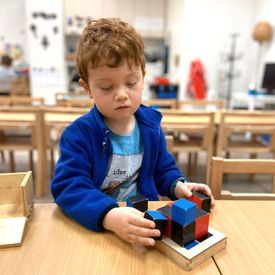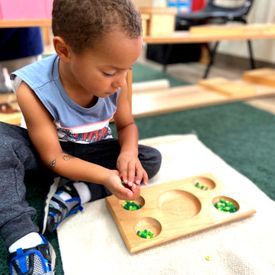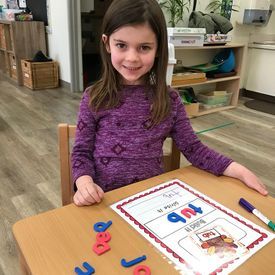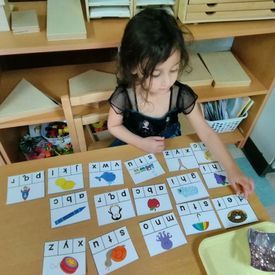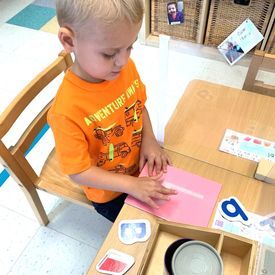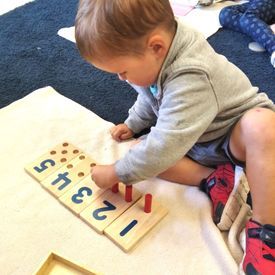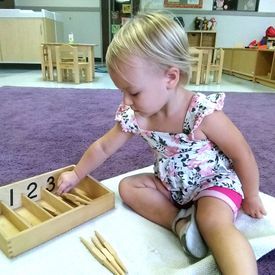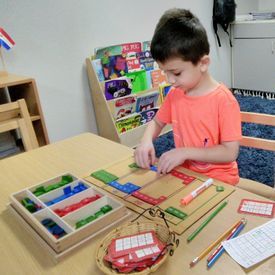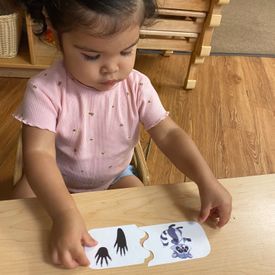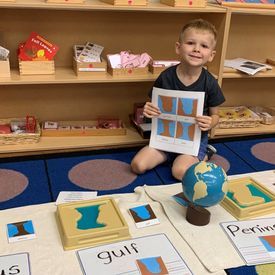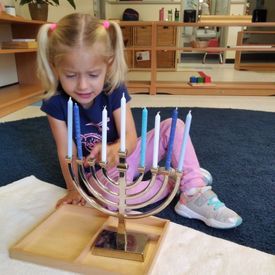Montessori Curriculum
The Five Areas of the Montessori Child Education
Practical Life
Exercises of Practical Life develop independence, concentration, self-control and physical coordination of the children. When the children are able to perform these exercises, they develop self-respect and self-esteem as they gain finer motor skills and self-control. The children also acquire social awareness that enables them to interact and cooperate with other children when they are working together in the classroom environment.
The purpose of exercises such as sorting, pouring, lacing, cutting, folding, polishing, sweeping, washing dishes, opening and closing, food preparation, etc. that children use in their day to day lives, is to develop concentration, hand-eye coordination, attention to detail and muscle development, which indirectly prepares a child for writing.
Sensorial
The purpose of the sensorial exercises is the isolation of a single quality such as color, weight, shape, texture, sound and smell in each exercise. Sensorial materials in a Montessori classroom helps children to discriminate, classify, and compare concepts such as length, height, weight, width and depth.
The children’s manipulation of the Sensorial materials develops essential skills such as differentiation, independent, judgement, estimations and exactness of perception and perception of similarities and differences which also assist in laying the foundation for future Mathematics work.
Language
Language is the ability our children use to express themselves with words. The Montessori language curriculum is meticulously designed to give children the tools with which to express themselves both in verbal and written form. Language is essential for them to reach their highest potential.
The children learn to read through a series of graded exercises and activities. In the first stage, they learn phonic sounds through various fun activities, recognizing and associating letters with phonic sounds. They then start reading, building and blending words and eventually progress to Consonant Digraphs and Vowel Digraphs. The last stage of reading is the introduction to Early Grammar, Comprehension and Creative Writing. All activities are done with concrete manipulatives that can be felt and touched.
Mathematics
“The Montessori child does not learn math, h/she experiences it.” The Montessori Mathematics apparatus serve as a concrete method where the children learn concepts of mathematics by working on tangible mathematics. A child begins learning mathematical concepts through the use of concrete mathematical material such as the Number Rods, Sandpaper Numbers, Beads, Symbol Cards which familiarize the child with the decimal system.
The child eventually graduates to abstraction in mathematical computation. Children master the four basic operations of Addition, Subtraction, Multiplication and Division using the Montessori materials. Other concepts such as fractions, time, measuring and patterns are also introduced in a hands-on manner.
Cultural Studies
The Cultural Studies provide the foundation for children to learn about the world around them as it encompasses Science, Geography, Botany, History and Cultural Awareness. The Cultural materials and topics which the children manipulate and discuss in the classrooms develop their understanding of the world around them.
The children relish the opportunity to work in the cultural areas. The children experience our world with real-life, hands-on learning, exploring and studying all that the world has to teach us. In addition to the above Montessori curriculum, our program includes Spanish, cooking, baking, music and movement, sports and a variety of extracurricular activities.
School Hours
Half Day: 8:00am – 12:00pm M-F
Full Day: 9:00am – 3:30pm M-F
Extended Day: 7:00am – 6:00pm M-F

